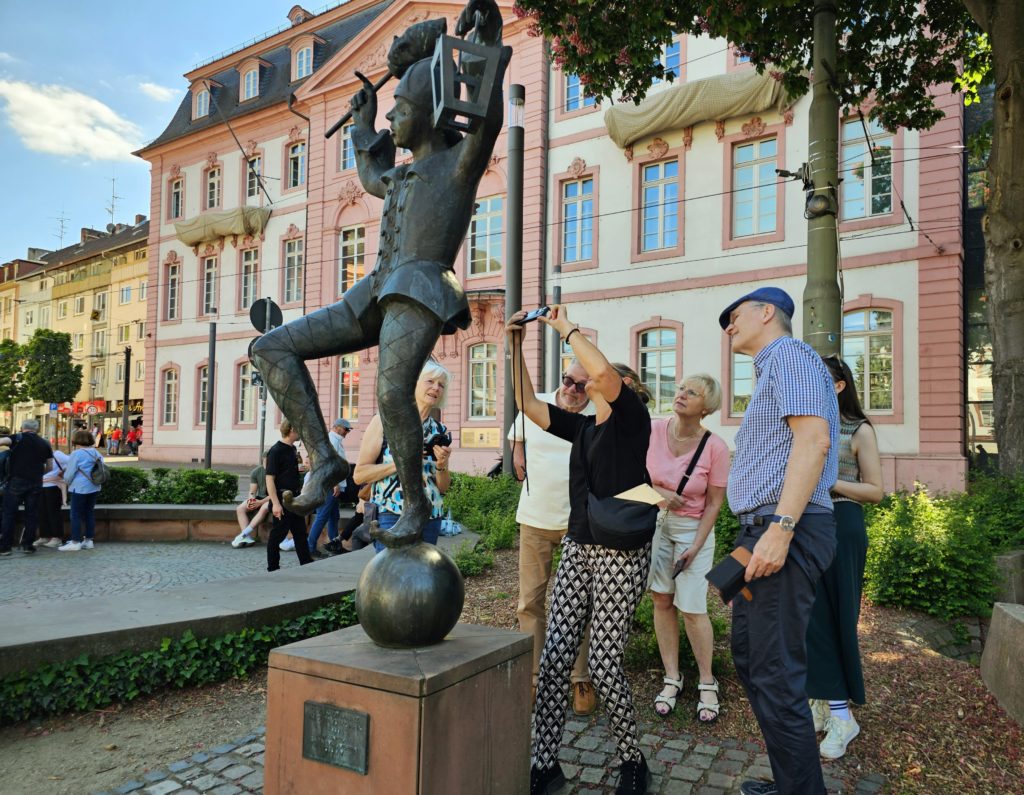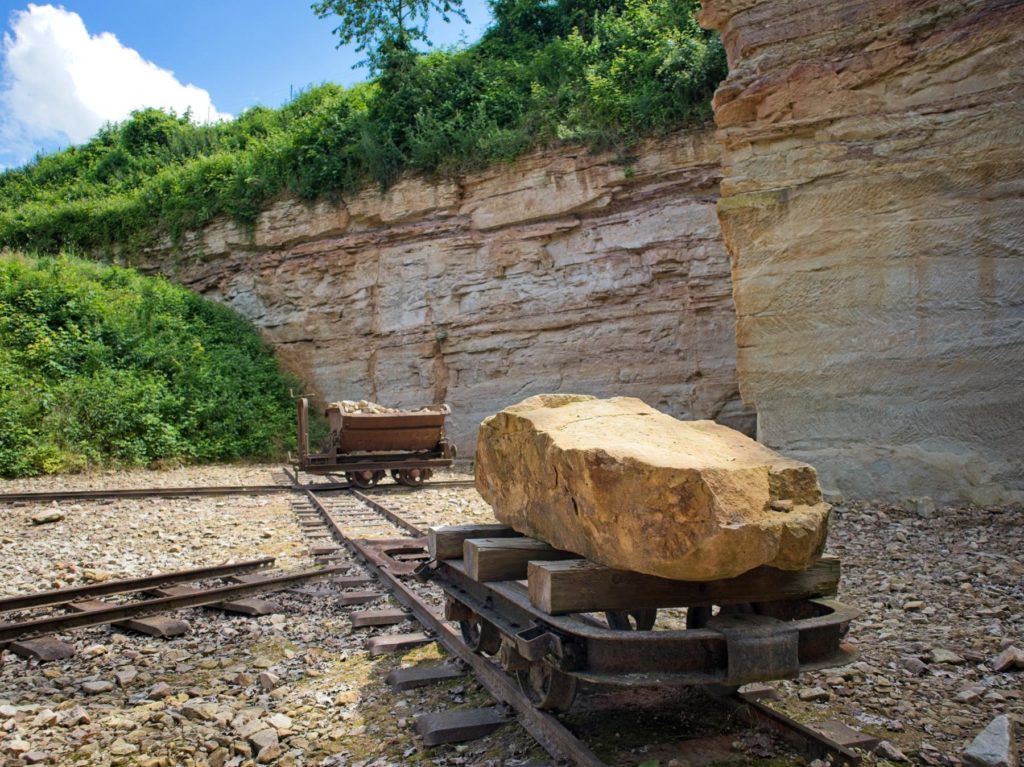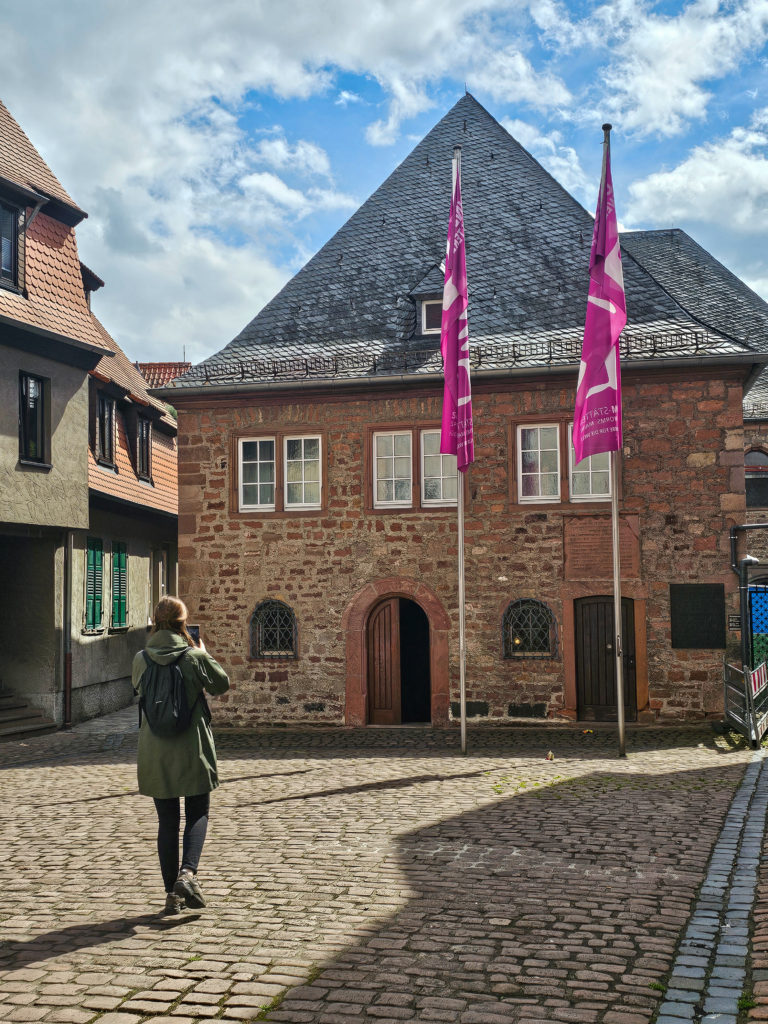
They are motionless and silent. And yet they tell history and stories. For a long time, they eked out a desolate existence in a in the backyard of the Alzey castle. Hidden from from the eyes of the public. But now the testimonies of the Roman past have been given a big stage - and what a stage it is. In the new stone hall of the Alzey city museum, temple stones, capitals, pillars and other exhibits from the period between the 1st and 3rd century A.D. are presented are presented in an almost spectacular way. A must for Roman fans and those interested in archaeology. interested, but also exciting for all other visitors to Rheinhessen's "secret capital". And this not least because of the modern, sacral architecture of the building.
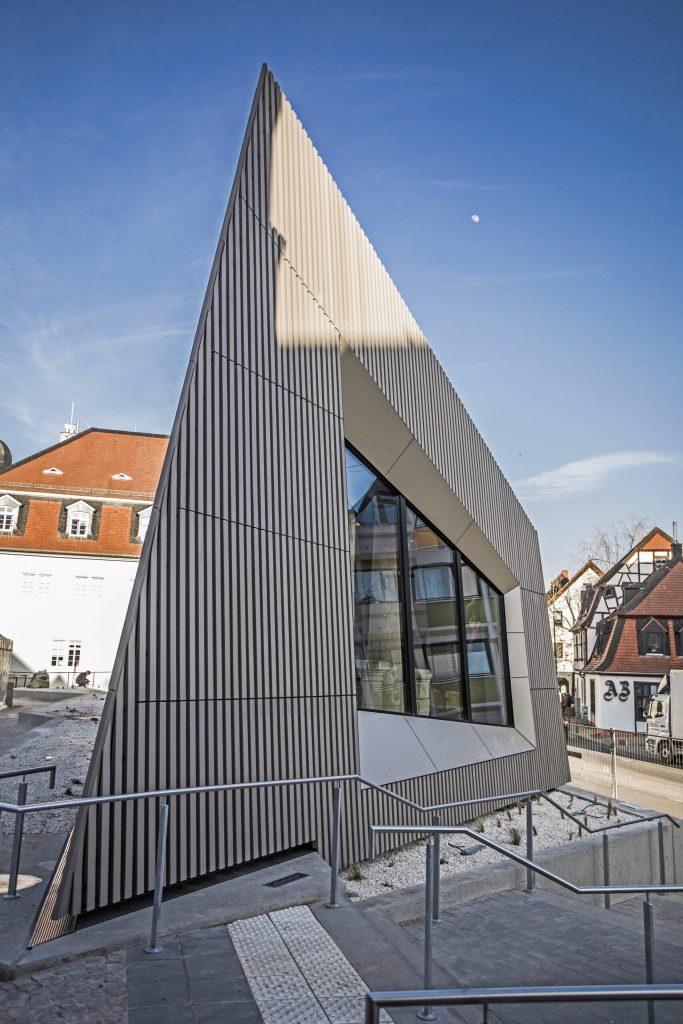
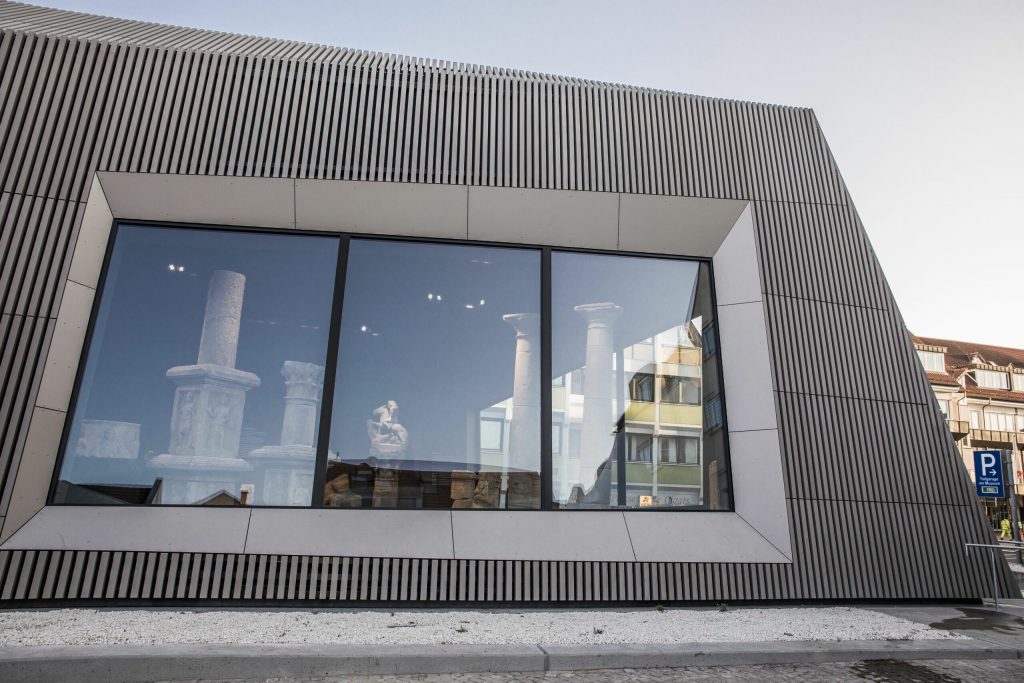
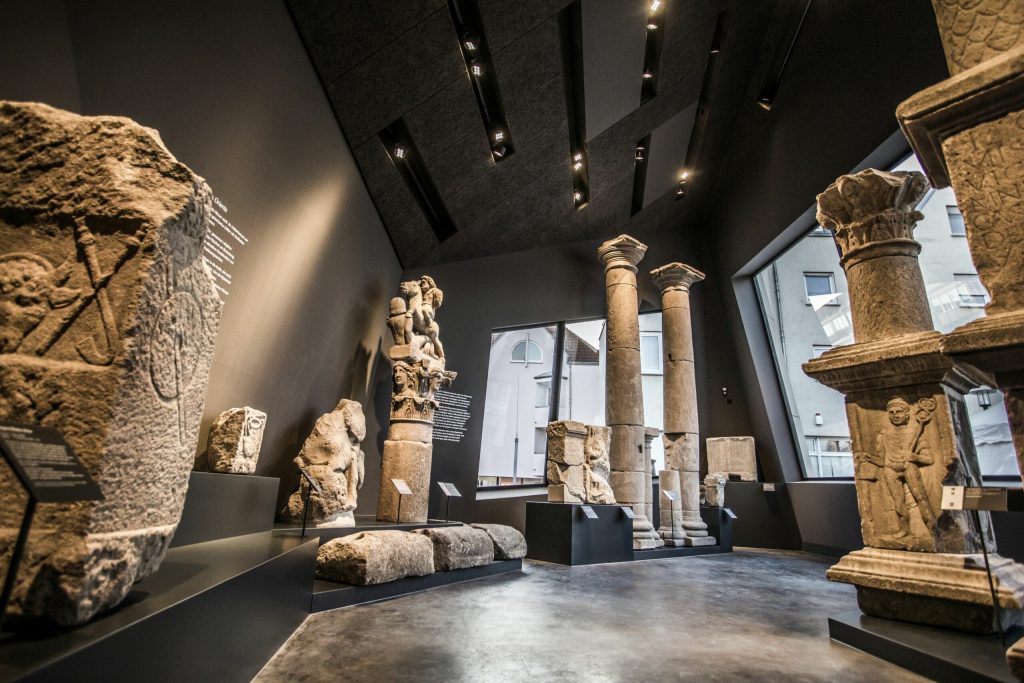
Upon entering the approximately 30-meter-long and about six meters high, one's gaze sweeps over the phalanx of columns, cuboids and sculptures. On the one hand, they are well illuminated by a sophisticated lighting technology, on the other hand, the large rectangular windows on the side walls rectangular windows on the side walls. They are "shop windows" in the true sense of the word, as Museum Director Dr. Rainer Karneth director Dr. Rainer Karneth: "These large windows are intended to make people curious about what we have here." This is particularly impressive after after dark, when the interior is lit up and the facade is illuminated. is illuminated.
Then the entire building appears even more more forceful than during the day. The building, which is clad with gray-brown clay panels contrast to the baroque building of the museum, which once housed a hospital. once housed a hospital. A contrast that architect Ernst Eichler quite deliberately was set deliberately. "It is a museum and should also be recognizable as such," says the as such," says the man from Alzey. A stylistic imitation of the existing museum, to which the stone hall was to which the stone hall was added, was out of the question for Eichler from the outset. "We contrast to the old house and a dialog that combines both styles," explains Eichler. both styles," Eichler explains. The surrounding development is characterized by an unsettled mix of styles from the sixties and seventies. In this respect a historicist architecture at this location would not be a coherent solution. With its modern design, the Steinhalle sets a visual exclamation mark in the a visual exclamation mark in the Alzey cityscape. A look that impresses - and and polarizes. However, the aesthetics of this building are also in the eye of the beholder. of the beholder. Scoffers complain that the building is reminiscent of a submarine. But museum director Karneth, the museum's director, can handle that well. "After all, we are also diving deep into the Roman history in our city," he notes with a wink.
The construction costs amount to 3.3 million euros. construction costs. That's no mean feat. However, the sum also includes the access to the municipal underground parking garage and the connection to the museum. are included. 85 percent of the costs for the Steinhalle come from funds provided by the European Union. Without these earmarked funds, it would not have been possible to realize this cultural cultural gem could not have been realized. If the people of Alzey had not opportunity, the money would have gone to another city or region in the EU. within the EU. The Roman stones would then probably have remained in the day in the backyard chamber of the Burgraviate.
During the construction only materials were used, which were already known to the Romans: Wood, glass, clay and concrete. Concrete? Yes, Concrete. "The Romans had 'invented' it," Eichler clarifies. And so the the structure builds a bridge to its content. It provides the viewer with viewer both profound and surprising insights into the time around 2000 years ago. years ago, when Alzey was still called Altiaium. This name is mentioned for the first time on a a nymph stone from the year 223 AD. This is on display in the well-stocked Roman section of the museum next door. This "birth certificate" makes Alzey one of the oldest cities in Germany. Thus Alzey is already mentioned in the 18. century, when the nymph altar was found, Alzey was described as an old Roman town. described.
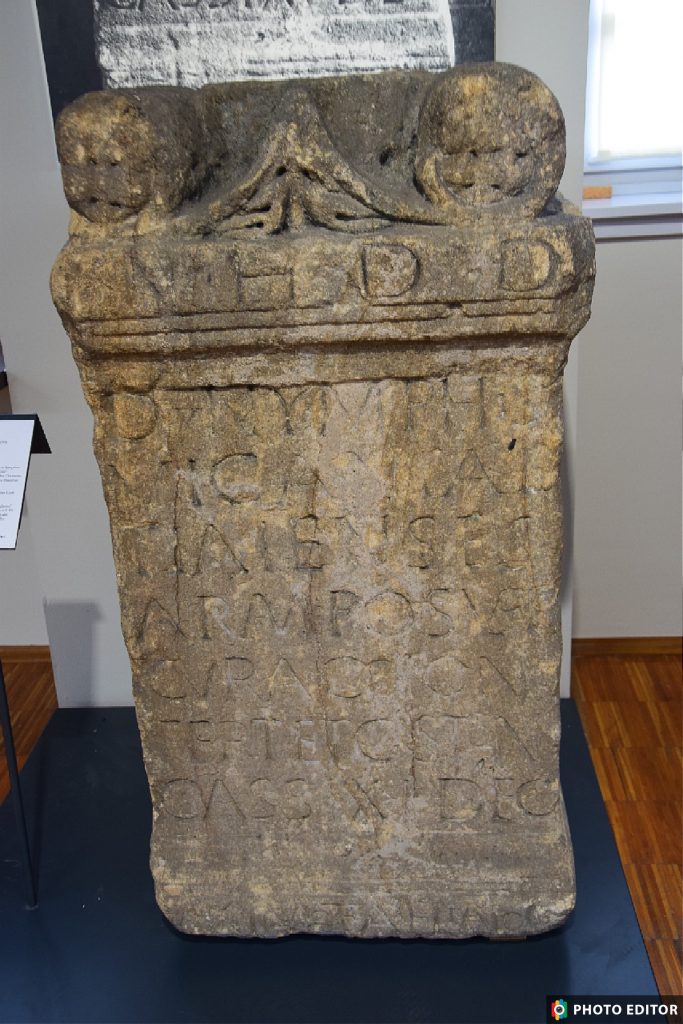
The finds unearthed during excavations in the years 1929/31 support this attribute. About 80 altars, votive stones, parts of Jupiter columns and architectural fragments from the time between the 1st and 3rd century A.D. were found not far from the site of the old the site of the old Roman fort. They originate from the destroyed Vicus Altiaium and were later built into a building of the fort. The Roman builders and craftsmen used the light colored sandstone from the nearby from the nearby Flonheim quarries.
Almost eight decades later, in 2003, another spectacular find was made that once again brought Alzey to the attention of experts. With a Magna Mater altar and parts of a pillar of the gods, further important evidence of the Roman city history was excavated.
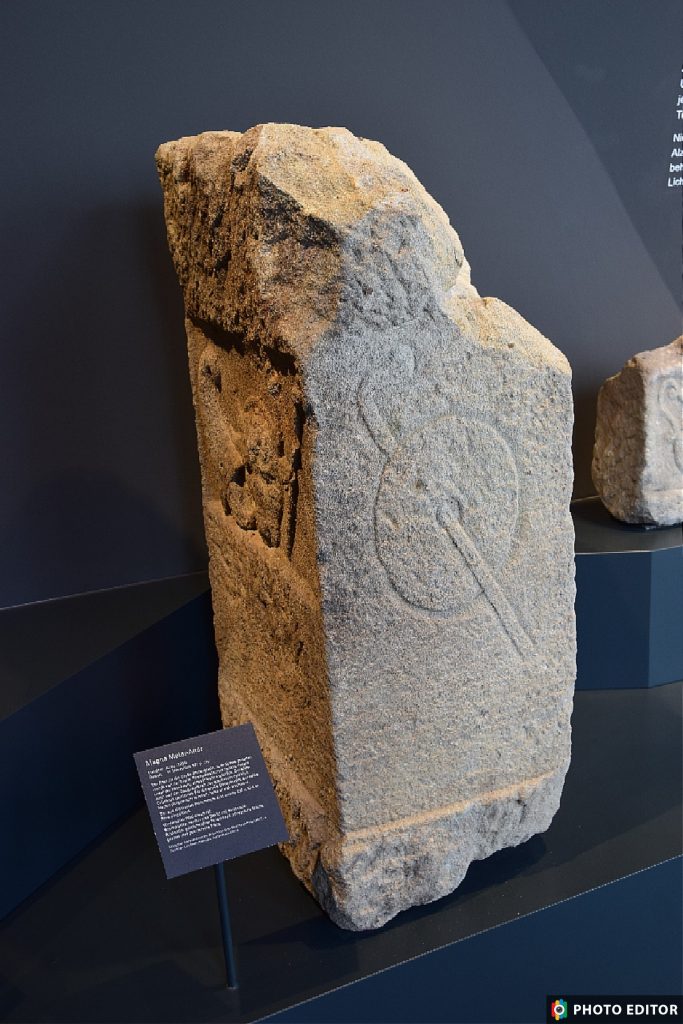
"Alzey has thereby gained a great significance in the world of Roman archaeology," says Rainer Karneth the significance of the finds. "The find from 1929/31 is one of the largest on German soil." Initially, the Roman stones were found in a storage building of the former Prinz Emil complex. After that, they moved to the casino building, which is now home to the Youth and Cultural Center, before being they then disappeared into the aforementioned backyard lot.
Now the stones have found a domicile where they can tell their story. A story with remarkable chapters. For example, the knowledge that Alzey was a spa and Roman times, Alzey was a spa and bathing was a spa and bathing resort. The basis of the flourishing spa business at that time were springs and wells with sulfurous healing water. This was used in the spa facilities by the medical staff to the spa guests. There was also a temple district, where the healing and spring deities could be and spring deities.
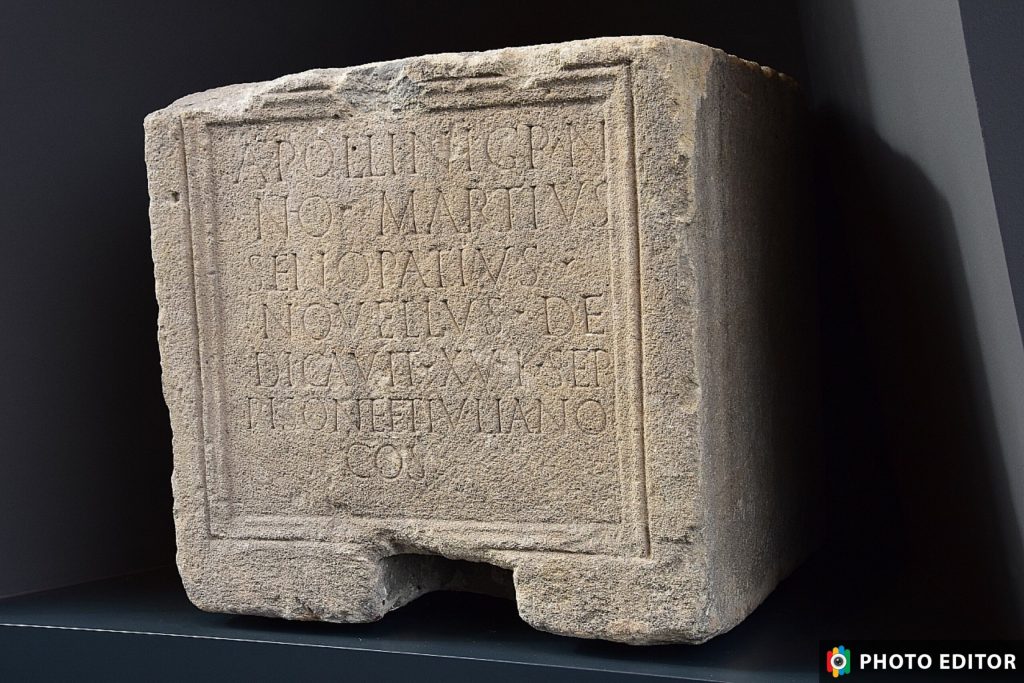
The fact that people at that time liked to ask for the help of the gods is documented by a votive stone from 175 AD. is evidenced by a votive stone from the year 175 AD. part of a large temple built by Martius Senopatius Novellus and dedicated to and dedicated to Apollo Grannus. This is evident from the inscription. Apparently the Roman-Celtic deity helped Novellus in his recovery. helped him. In gratitude, the latter had the temple built. But help was also given Sirona, the goddess of healing, who in the Celtic provinces was the cult companion of Apollo Grannus. Both had the Alzey had donated consecration stones to both of them as well as to Juno and the English Bath, for the nymphs and Apollo Demioncus.
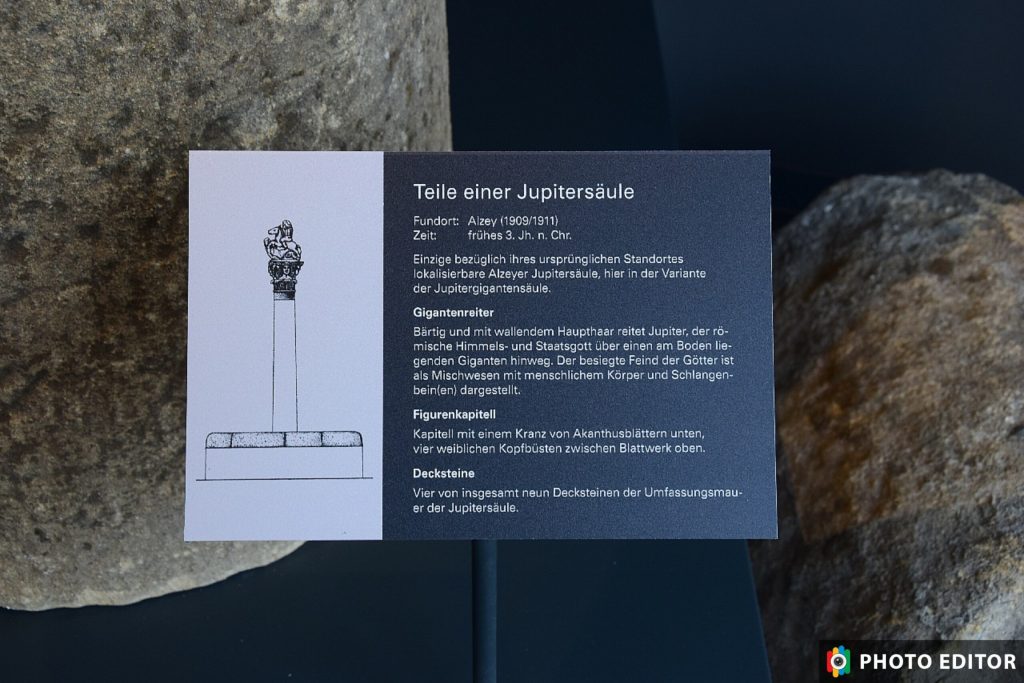
A not insignificant part of the exhibited stones are parts of Jupiter columns. Particularly attractive are the representations of the Roman main god as a so-called giant rider. Bearded and with flowing Jupiter rides over a giant lying on the ground. The defeated enemy of the gods is depicted in the sculpture from the 3rd century A.D. as a mixed mixed creature with a human body and snake legs. Not only at the viewer's gaze is not limited to this sculpture. charming details. One is amazed and sees oneself abruptly in the Roman mythology with its gods and and rituals.
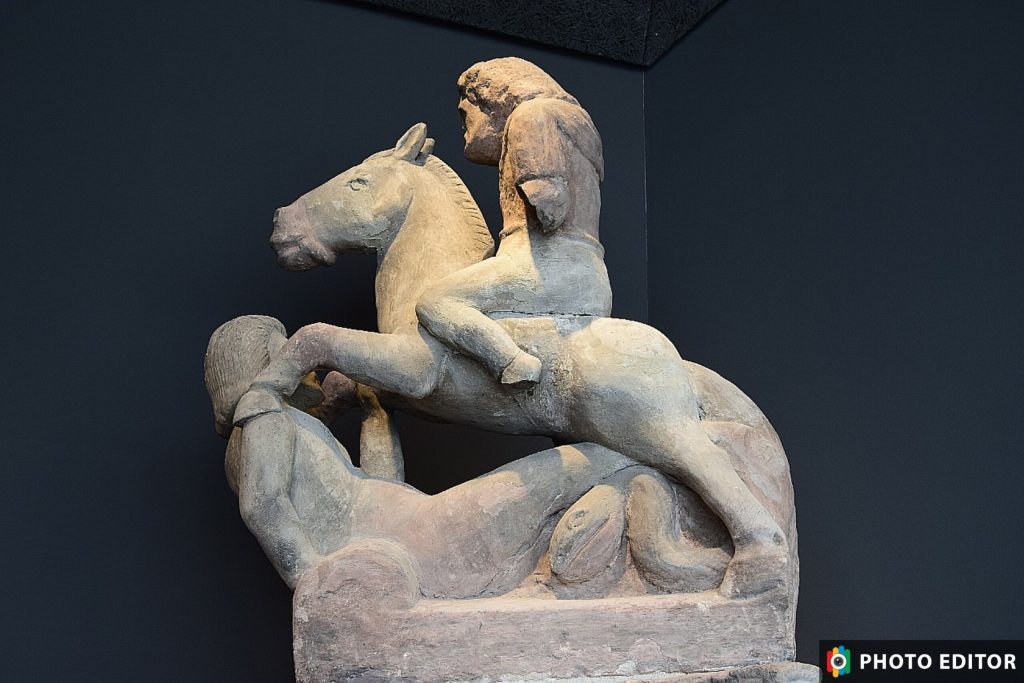
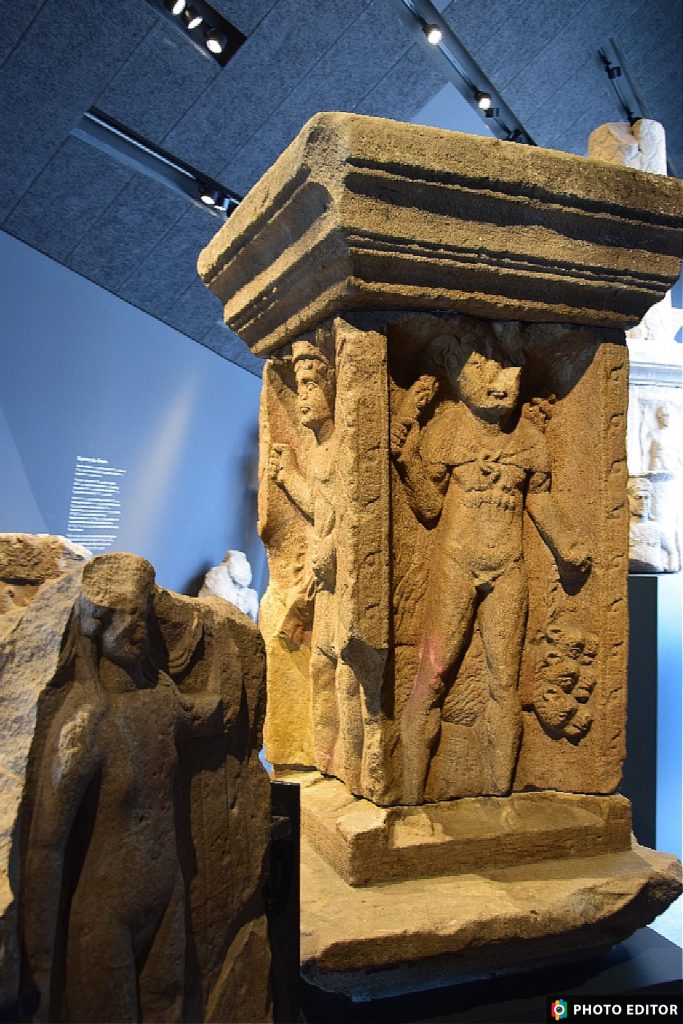
"What's important for us today is the spectrum of the gods that are represented here," museum director Karneth directs the view to the insights for posterity that can be gleaned from the stones. Similarly the finds on display here, the stone hall has met with a promising response from experts. a promising response from experts. For example, the General Directorate of Cultural Heritage of Rhineland-Palatinate is positively disposed towards the project. The Stone Hall is also to be part of the Rheinhessen Roman Route (www.roemerroute-rheinhessen.de) will be. "Alzey will be one of the milestones on this route," Rainer Karneth is certain.
The collection of Roman artefacts displayed in the stone hall finds is presented in an informative way for the visitors. Text panels provide information about the respective find. Via QR code the visitor can also digital sources of information. Larger text panels on the walls provide provide concise background information about the Roman period in Alzey and help visitors to help visitors to classify what they have seen.
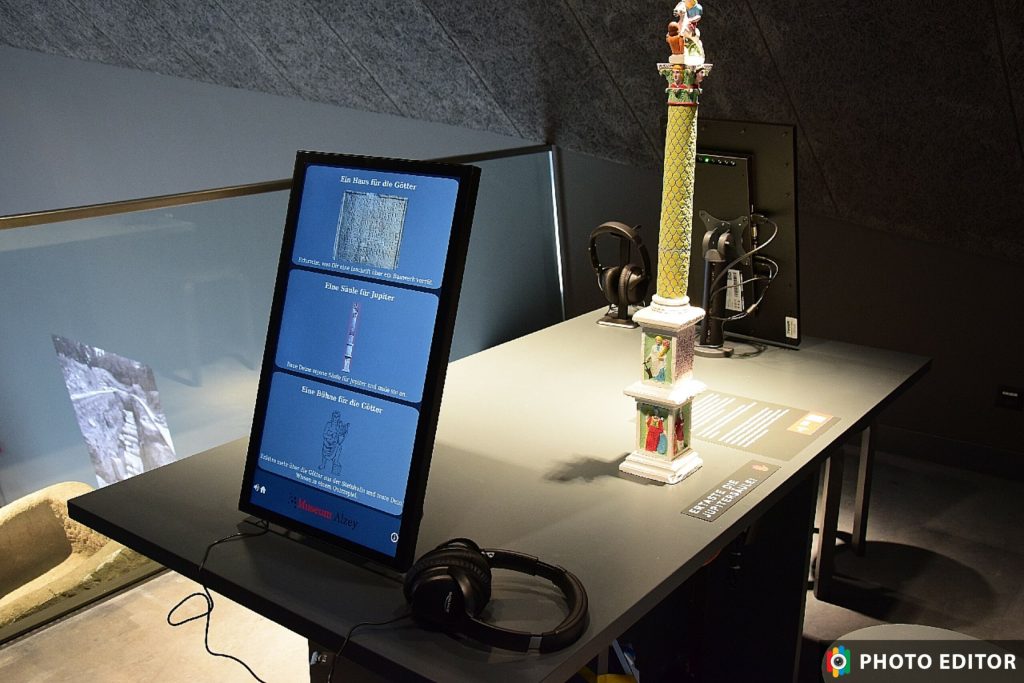
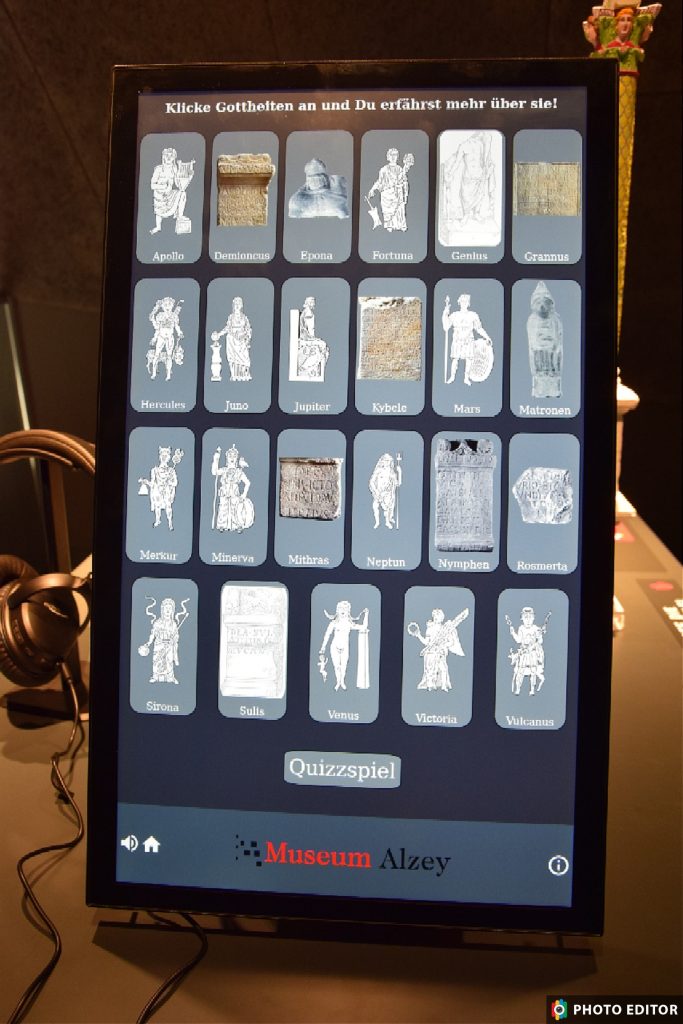
On a platform on the upper floor of the stone hall a multimedia station is set up, where you can dive virtually and interactively into the world of the Romans interactive virtual immersion in the world of the Romans. From here one also has a good overview of the exhibition space. In the future, its equipment will include will also include a special multimedia detail: A "sound shower" in the entrance area. Anyone standing underneath it will learn interesting facts about the history of the city history. The text, which is played back in a continuous loop, was recorded by by the Mainz actor Tino Leo.
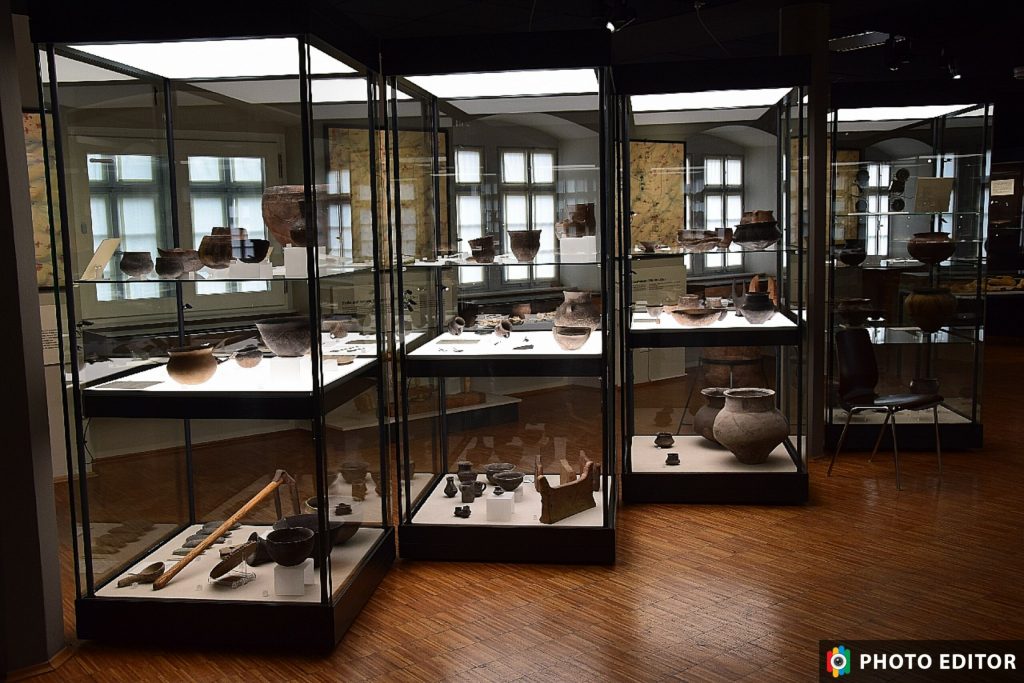
With the new Steinhalle, the Volkerstadt has gained an attrac attraction that radiates beyond the city limits. The exhibition provides insights into the time when the Romans and their culture dominated the region. If you would also like to learn more about the other epochs of the city's history, you should should definitely visit the city museum, which is connected to the stone hall. Its collection - also vividly presented - provides insights into the eventful Alzey's eventful history. User-friendly. Like the Steinhalle itself, the museum is the museum is barrier-free and admission is free. An offer that is not available everywhere.
Stone Hall and Museum of the City of Alzey
Antoniterstrasse 41
55232 Alzey
Tel.: 06731 49 88 96
Mail: museum@alzey.de
Internet: www.museum-alzey.de
Opening hours:
Mo - Fr 10 to 12.30 u. 13.30 to 16.30 h
Sat, Sun and holidays 10 to 12 and 14
till 16.30
Guided tours:
Bookable via the Tourist Information, Tel.: 06731 49 93 64; Mail: touristinfo@alzey.de

